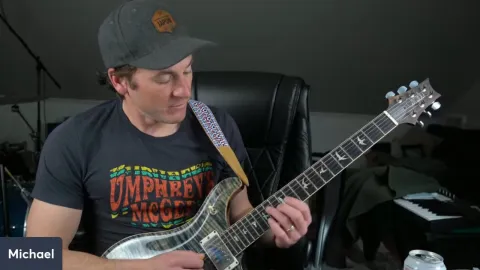My first video post. Go easy on me.
Michael is the one who runs this whole thing!


In this masterclass, Michael Palmisano delves into the concept of harmonized scales, specifically focusing on the major scale and its application on the guitar. He begins by reviewing the basics of the major scale and its construction, emphasizing the importance of understanding the 1-2-3-4-5-6-7 note sequence. Michael demonstrates how to play single notes and introduces the idea of playing in a more melodic and harmonious way by incorporating chord tones and harmonies. He encourages participants to have their guitars ready and to actively engage with the lesson, offering opportunities for viewers to join him on screen and ask questions towards the end.
As the lesson progresses, Michael explains the concept of harmonizing the major scale by building and playing triads (three-note chords) for each scale degree. He meticulously demonstrates how to construct a harmonized major scale across the guitar fretboard, highlighting the different chord qualities (major, minor, diminished) associated with each scale degree. Michael's instruction includes practical exercises for practicing these concepts, emphasizing the ability to bridge the gap between rhythm and lead guitar playing. He also touches on inversions and the importance of understanding the role of the third in determining chord function.
Throughout the masterclass, Michael encourages experimentation and practical application, suggesting that viewers create a loop in a key of their choice and practice playing the harmonized major scale and its triads over it. He also discusses the concept of dyads (two-note chords) and how removing one note from a triad can lead to interesting comping options, further blending rhythm and lead guitar skills. The lesson concludes with an open Q&A session, where Michael addresses viewers' questions, reinforcing key concepts and encouraging further exploration of the harmonized major scale and its creative possibilities on the guitar.
```html
My first video post. Go easy on me.